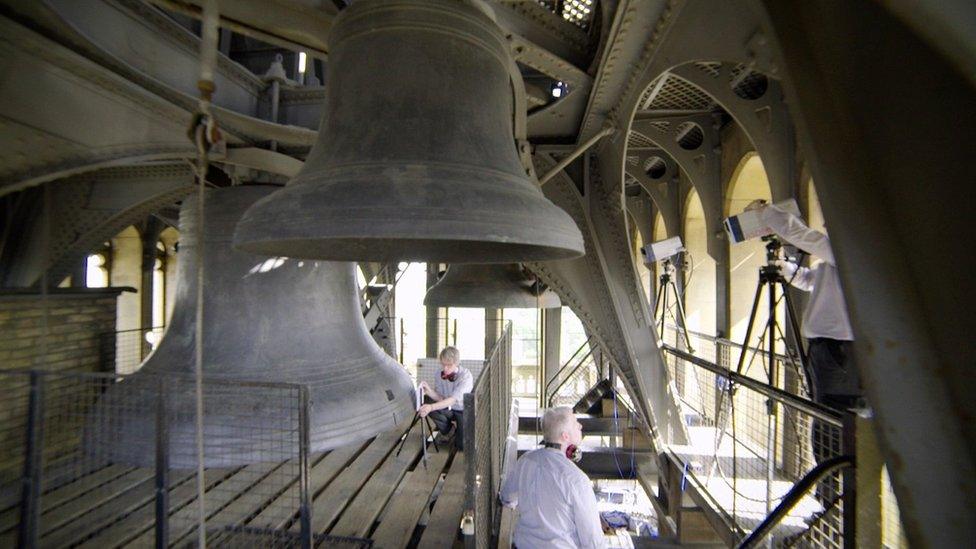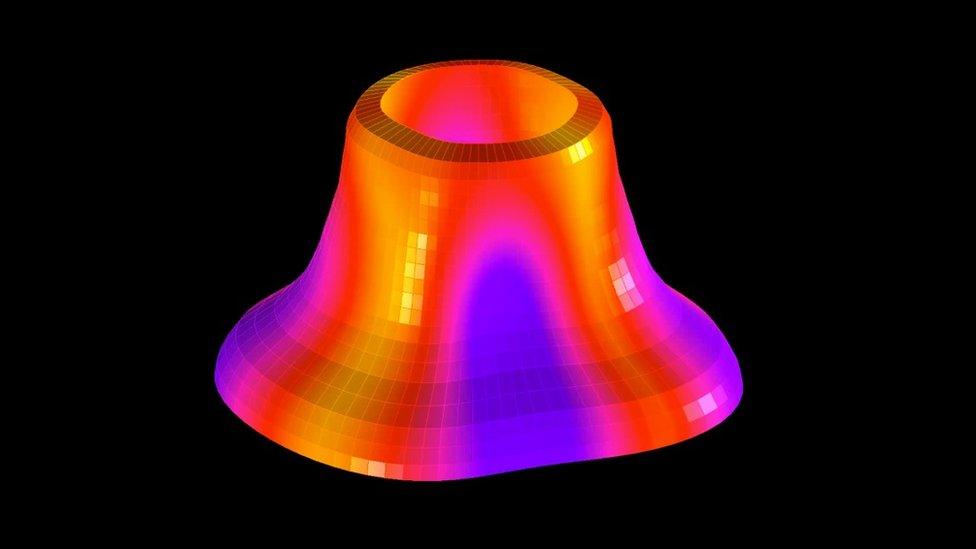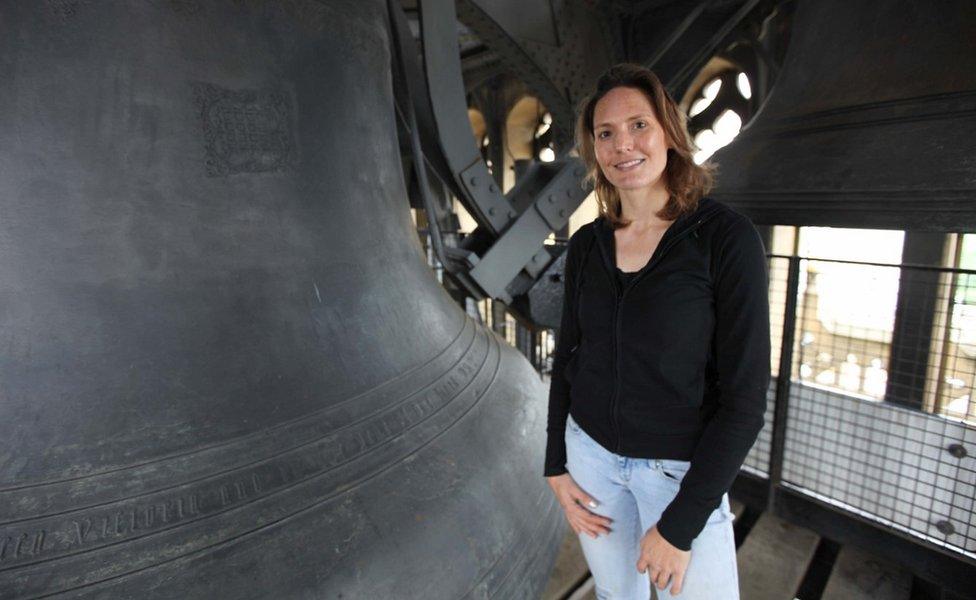Lasers reveal how Big Ben 'bongs'
- Published

Scientists point lasers at Big Ben
Scientists have used lasers to analyse how the sound of Big Ben's "bongs" is created.
Big Ben - officially known as the Great Bell - is the largest of five bells that hang in the belfry of Elizabeth Tower at the Palace of Westminster.
The team was granted exclusive access for the first ever attempt to assemble a vibration map of Big Ben and reveal how it produces its harmonious tone.
Two lasers were used to scan Big Ben as it chimed at 9, 10, 11 and 12 o'clock.
"Aside from the technical aspects, one of the most challenging parts of the job was carrying all of our equipment up the 334 steps of the spiral staircase to the belfry," said Martin Cockrill, from the University of Leicester, who led the team that undertook the study.
"Then to get everything set up before the first chime, we were literally working against the clock."
The study was commissioned by the BBC and the results will be featured in the BBC Four series Sound Waves: The Symphony of Physics.
Mapping the vibrations
The scientists used a measurement technique called "laser Doppler vibrometry". This involved creating a 3D computer model of Big Ben and then using two lasers to map the vibrations in the metal of the bell as it chimed.
From the measurements, the scientists have produced animations showing the different vibration patterns of the bell.

This 3D Animation shows one of the vibration patterns of Big Ben
According to Martin Cockrill, "Many of the vibrations in the metal of Big Ben are too tiny to be seen by the naked eye. But this is what we were able to map using the lasers and not just one or two points on the surface; we were able to get over 500 measurements across the surface which just wouldn't have been possible with previous technologies."
How Big Ben compares
Big Ben was cast at the Whitechapel Bell Foundry in 1858. It weighs 13.7 tonnes and is one of the largest bells in the UK.
According to the scientists, it is thicker than other bells of a similar size, weighing more and as a result having a higher pitch than expected for its diameter.
The "bong" of Big Ben is produced when its huge 200kg hammer hits the side of the bell, setting off vibrations in the metal and causing the entire bell to pulsate.

Dr Helen Czerski presented the programme on Big Ben
As presenter Dr Helen Czerski explains, although we perceive the chime of Big Ben to be a single sound. It is actually made up of a series of distinct frequencies.
"The interesting thing about bells is that there are many differently shaped pulsations, all happening at the same time, on top of each other. Slower vibrations produce deeper sounds, and each bell makes a characteristic mixture of notes."
Sound of silence
The Big Ben laser measurements were done prior to the conservation refurbishment work that was announced in April last year. This will involve Big Ben being temporarily silenced as crucial maintenance is carried out on the clock.
Big Ben 'bongs' to be silenced for £29m refurbishment
The Houses of Parliament authorities have confirmed that the initial stage of works is now underway. The plan is for Big Ben to maintain striking and tolling for important events. Big Ben and the clock are expected to run as normal for the first half of 2017.

Big Ben facts
The BBC first broadcast the Westminster Chimes on New Year's Eve 1923.
Big Ben measures 2.7m in diameter, 2.2m in height, and weighs 13.7 tonnes. The hammer which strikes Big Ben weighs 200kg.
In 2012, the Clock Tower was renamed the Elizabeth Tower in recognition of HM The Queen's Diamond Jubilee.

"Sound Waves: The Symphony of Physics" is produced by BBC Studios in partnership with The Open University. The first episode of the series will be broadcast on 2nd March 2017 on BBC FOUR.